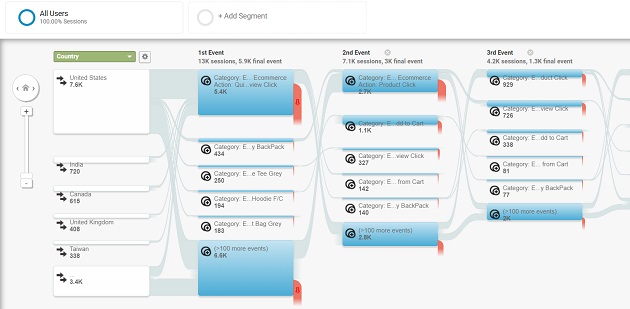The Buzz on Google Analytics Event Tracking
The Single Strategy To Use For Google Analytics Event Tracking
Table of ContentsThe Facts About Google Analytics Event Tracking RevealedThe Single Strategy To Use For Google Analytics Event TrackingUnknown Facts About Google Analytics Event TrackingNot known Details About Google Analytics Event Tracking All About Google Analytics Event TrackingThe Single Strategy To Use For Google Analytics Event Tracking

If you're going to establish event monitoring manually, after that you're mosting likely to have to include some extra code to the aspects you desire to collect information from. The code you're mosting likely to collaborate with will certainly look something such as this: There are 4 elements within that code bit that you're going to need to define on your own: occasion, Category, occasion, Activity, occasion, Label and event, Worth.
As you can see, two of these are needed (group and action) while label and worth are optional. All of it relies on the kind of info you desire passed on back to Google Analytics when a user clicks the defined aspect (Google Analytics Event Tracking). It will certainly be a lot less complicated to define these components if you evaluate your internet site and choose which elements/actions you want to track
What Does Google Analytics Event Tracking Do?
Now, you'll be asked to specify the and and you'll desire to pick from the drop-down food selection that appears when you click. This will certainly bring up the exact same occasion tracking elements we checked out earlier, which you'll need to complete. When you've defined these, you can relocate down to the second box and choose the trigger that will terminate your tag.
On the following display, you'll also have an area for naming your trigger and, if you click on the box, you'll see a listing of the various triggers you can select. In this situation, we wish to choose and after that pick the option below. You'll establish the trigger to only discharge when an aspect is clicked with an URL that consists of the.
Straightforward - Occasion tracking! Event monitoring provides you a photo of just how customers engage with your web site and business. Check out on as we check out every little thing you require to know, including what it is, why you must track occasions, just how to handle occasions information, and various other appropriate Frequently asked questions you might have.
The Facts About Google Analytics Event Tracking Uncovered
You can switch over in between your occasion groups, activities, and labels in the Leading Occasions report. The Event Pages report presents the web pages where events are triggered.
It reveals you the course they take as they move from one occasion to the following and helps you to determine which web content involves your audience the most. Occasions in Google Analytics have 4 main components. They are likewise a part of the occasion monitoring code. Google Analytics uses these codes to track customer communications and check my reference group them right into event reports.
A list of the parameters you can track on your internet site is on the. After examining all essential fields, you can click "X" to close the home window and return to the Overview menu on the.
Indicators on Google Analytics Event Tracking You Need To Know
If you have not done so, you may need to set up a variable in the Google Analytics Settings box. After this, enter your GA tracking ID in the Tracking ID field.
Your ID will be on top of the screen. To do this, follow the following collection of activities: After setting up the fields, choose the "Triggering" section. When configuring your new trigger, click the "+" switch, then the "pencil" button, after that choose your trigger type. Label your trigger and specify the conditions that result in set off firing.
The Facts About Google Analytics Event Tracking Uncovered

When it website link familiarizes which areas and aspects are leading clients via your conversion funnel, you still won't understand. So, without event tracking, GA records will just count brows through as single-page sessions, even if individuals spend a great deal of time on one web page and engage with it dramatically (and a bounce).
Yet just how does occasion tracking achieve this?Single-web page sessions referred to as bounces start and end on the same page. Without occasion monitoring, GA will certainly classify a customer's go to as a bounce if they don't navigate to another web page, despite just how they connect with it. For instance, a video-rich web page can have a greater bounce price if occasions are not tracked.
Unknown Facts About Google Analytics Event Tracking
For GA to take event hits into account when gauging bounce prices, you must pick "Non-interaction occasion" as "False" during the GTM configuration. Setting "occasion objectives" with occasion activity is an excellent way to monitor customer activities you worth extremely, such as new lead submissions or clicks on a phone call to activity.